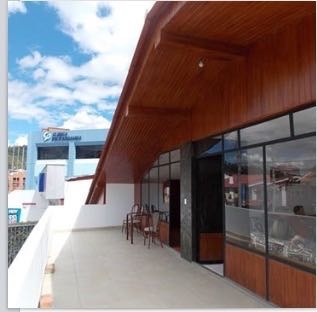RAW IN CUENCAMaintaining as raw a diet as possible in Cuenca and Ecuador
by Susan Schenck
The raw-food movement is growing fast in the U.S. And there are plenty of reasons for it.
Humans are the only animal that cooks food. Cooking began only 20,000 years ago, very recently compared to humankind’s 2.5 million years of existence. This is also when the diseases of civilization began. More recently, with processed and highly heated foods, we have more and more cancer, diabetes, arthritis, and heart disease.
What happens when you cook? Cooked meat, for example, produces toxic byproducts called heterocyclic amines, which can lead to cancer. Cooked fats contain lipid peroxides, also carcinogenic. Cooked carbohydrates have carcinogenic acrylamides. Because the chemicals produced from cooking are so chaotic and unpredictable, it’s possible that humans may never adapt to cooked food. Animals in the wild, eating pristine raw food, live seven times their maturation rate. So humans should be living to about 140 years, since we mature at age 20.
By contrast, when we eat raw food, our bodies get a break from all these toxins and they can begin to heal and repair. We also nourish the body with so many nutrients that are destroyed by heat. I personally have met people who have healed from all kinds of diseases through a raw-food diet.
In my book The Live Food Factor, which has been described as the “raw food bible,” I cite 66 studies showing the superiority of a mostly raw-food diet as opposed to cooked. If you eat 80% to 100% of your calories uncooked, you can avoid major diseases. Eating at 100% raw will reverse even “incurable” ailments.
The issue here in Cuenca, and Ecuador in general, is that it’s hard to find most of the raw gourmet ingredients. So we raw fooders simply have to make do with what we’ve got. Also, no restaurants here cater to raw fooders. My goal is to educate people, both Americans and Ecuadorians, on the importance of eating a high raw diet, thus creating a market for such products as unheated cream, olive oil, chocolate, goji berries, truly raw nuts, etc.
In the meantime, is it possible to eat out in Cuenca on such a restrictive diet? Yes it is, if you make those one to two meals a week your 20% cooked. Furthermore, you can enjoy salads, which are mostly raw, such as the dinner salad at Inca Lounge or the broccoli salad at California Kitchen. I’ve also been told that some of the pizza places have good salads. You can also go to juice bars and vegetarian restaurants and request fresh-squeezed juices.
As for the 20% cooked, stay away from grilled or barbecued meat, so popular here in Ecuador. The longer and the higher the temperatures used, the more toxic the food; thus, grilling is the worst. Save that for special occasions, such as the Fourth of July celebration at the California Kitchen.
Stay tuned for future articles, which will include topics such as local ways to get exercise, local fruits, where to shop for quality food and supplements, the petition for a salad bar, and more.
Susan Schenck, LAc, MTOM, is a raw food, health, and weight-loss coach and the author of The Live Food Factor and Beyond Broccoli. She resides in Cuenca and can be reached at livefoodfactor@yahoo.com.





















